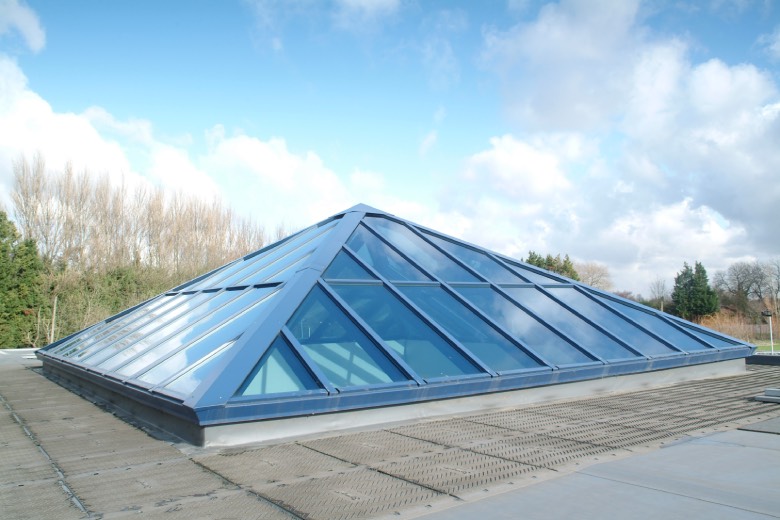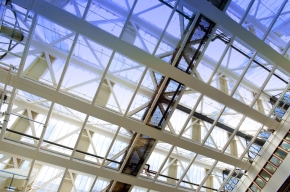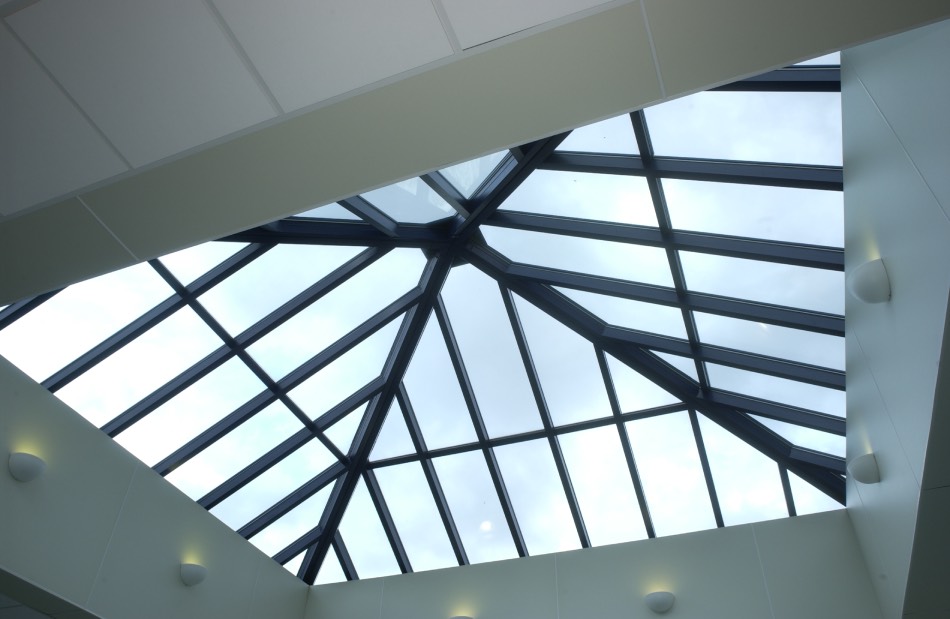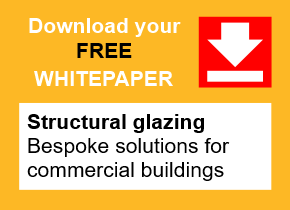A guide to daylight design within commercial buildings using bespoke structural glazing solutions
Contents |
Introduction
Structural glazing systems are streamlined systems that are fixed and installed using various methods giving the appearance of being part of the fabric of the building. The systems allow commercial buildings to have windows as walls and roofs, and walls and roofs as windows yet hold structural elements together to create a strong and secure building envelope. The level of design customisation can provide the exterior of the building with a more homogenous finish that minimises visual interruption to the façade or the roof.
Structural glazing – more than enhancing lighting
The advantages of structural glazing do not simply lie in maximising available daylight. A major contributing factor to the increasing use of structural glazing in modern architecture is its loadbearing capacity. It is important in the conception stage to use a holistic approach and consider structural glazing as part of the fabric of the building. With careful design, the loadbearing capacity of a system could, for instance, be used to minimise the use of steel structures that would otherwise be required to support a glazing solution.
As with standard rooflights, skylights and façade glazing, qualifying criteria must be taken into consideration, although the installation of structural glazing is not as predetermined by the opening available to the same degree. The size or span of each glazing unit can be significantly larger, depending on the rafter depth used and fragility rating required for the design. This affords the designer a better ability to create larger unsupported shapes with fewer sightlines and better light transmission. The use across commercial buildings means the daylight quality is further improved for the building users and there are fewer obstructions to the view of the outside. This makes the connection with nature more realistic.
Bespoke structural glazing – the imagination knows no bounds
Bespoke structural glazing systems give architects the ability to choose the ideal span, size and the shape of the opening. In terms of the building envelope, the location of the opening is flexible, and the glazing can be customised to interface with the desired surface curvature or a roof pitch. By eliminating the need to factor in the glazing solution at the conception stage, the designer is presented with freedom to remain faithful to their original concept and vision.
A bespoke approach to structural façade glazing changes the sheet of glazing that envelops the building to open up exciting design possibilities. Curved or radiused external glazing or even multiple curvatures can be deployed and non-rectangular shapes and more ‘irregular’ shapes can be used for multifaceted façades. The attention-commanding look adds dimension to the building and can be complemented using light and light reflection.
To find out more about daylight design within commercial buildings using bespoke structural glazing solutions, download the VELUX Commercial whitepaper ‘A guide to daylight design within commercial buildings using bespoke structural glazing solutions.’
Related articles
- Designing daylight solutions for commercial buildings
- Aspects of daylighting design covered by EN 17037
- EN 17037 Daylight in buildings
--VELUX Commercial 11:47, 16 Sep 2020 (BST)
Featured articles and news
Homes England supports Greencore Homes
42 new build affordable sustainable homes in Oxfordshire.
Zero carbon social housing: unlocking brownfield potential
Seven ZEDpod strategies for brownfield housing success.
CIOB report; a blueprint for SDGs and the built environment
Pairing the Sustainable Development Goals with projects.
Types, tests, standards and fires relating to external cladding
Brief descriptions with an extensive list of fires for review.
Latest Build UK Building Safety Regime explainer published
Key elements in one short, now updated document.
UKGBC launch the UK Climate Resilience Roadmap
First guidance of its kind on direct climate impacts for the built environment and how it can adapt.
CLC Health, Safety and Wellbeing Strategy 2025
Launched by the Minister for Industry to look at fatalities on site, improving mental health and other issues.
One of the most impressive Victorian architects. Book review.
Common Assessment Standard now with building safety
New CAS update now includes mandatory building safety questions.
RTPI leader to become new CIOB Chief Executive Officer
Dr Victoria Hills MRTPI, FICE to take over after Caroline Gumble’s departure.
Social and affordable housing, a long term plan for delivery
The “Delivering a Decade of Renewal for Social and Affordable Housing” strategy sets out future path.
A change to adoptive architecture
Effects of global weather warming on architectural detailing, material choice and human interaction.
The proposed publicly owned and backed subsidiary of Homes England, to facilitate new homes.
How big is the problem and what can we do to mitigate the effects?
Overheating guidance and tools for building designers
A number of cool guides to help with the heat.
The UK's Modern Industrial Strategy: A 10 year plan
Previous consultation criticism, current key elements and general support with some persisting reservations.
Building Safety Regulator reforms
New roles, new staff and a new fast track service pave the way for a single construction regulator.



























